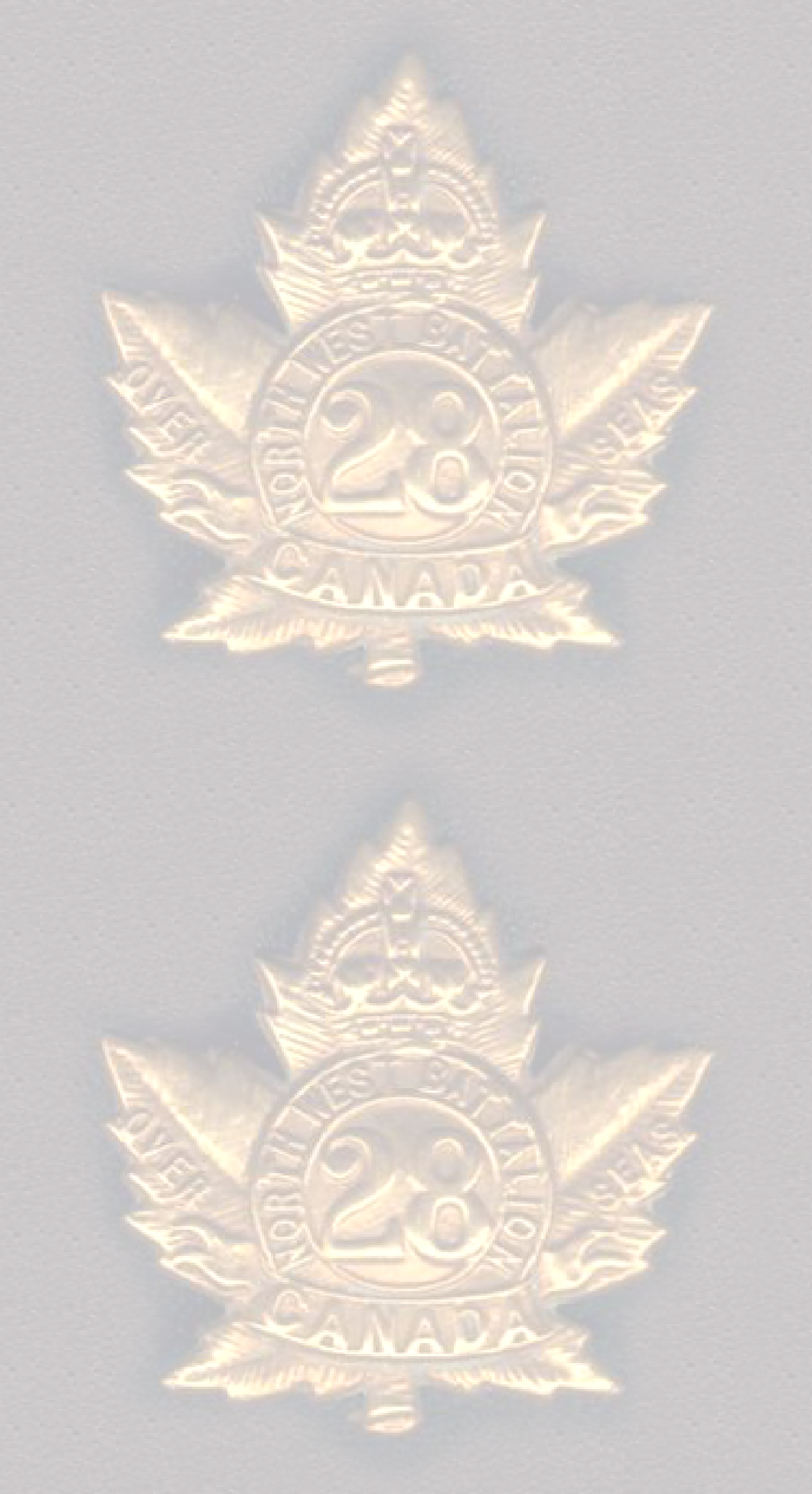
The War Diary of Lieutenant William L Hayes M C
1915—1919
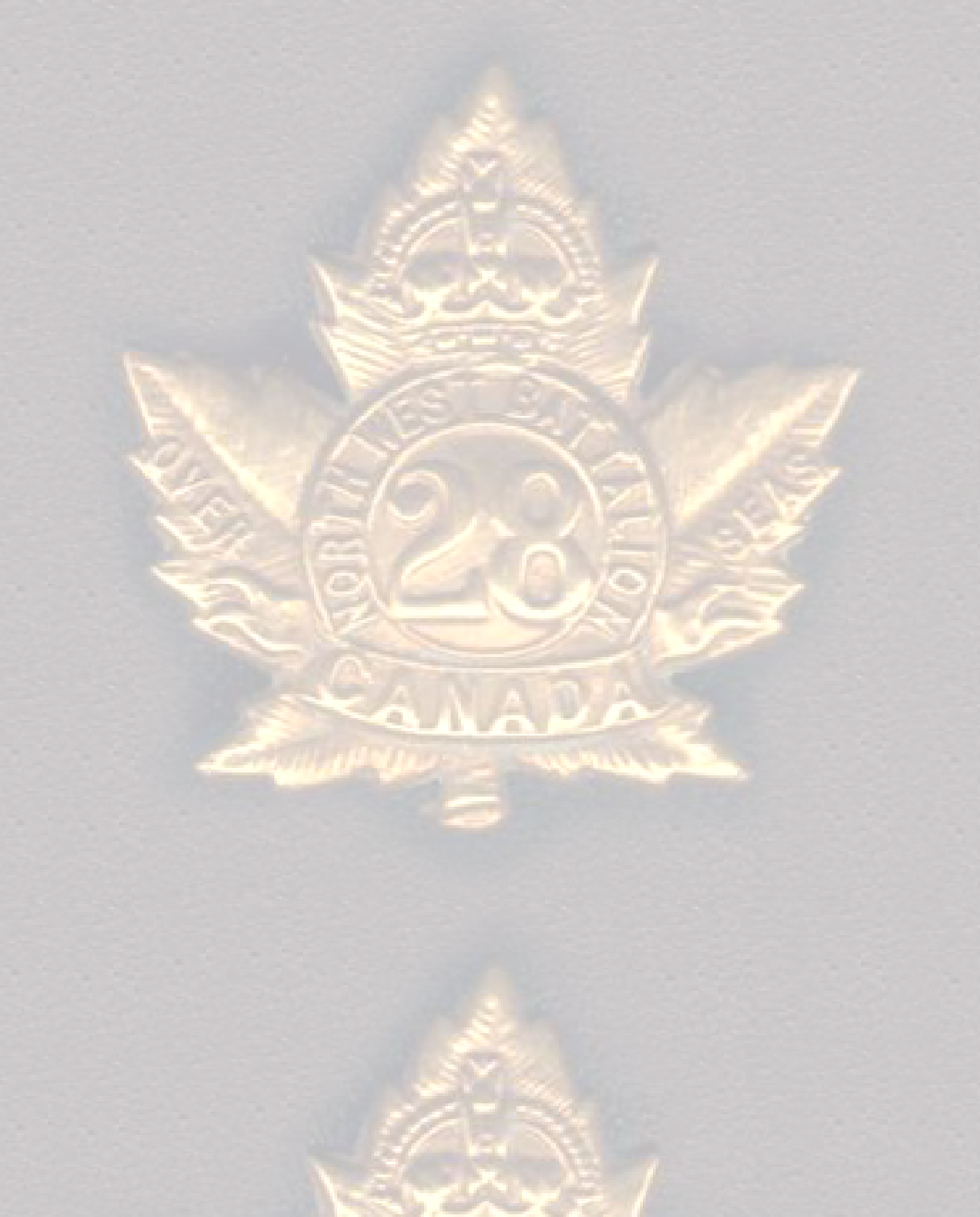
1917 November
The Third Battle of Ypres, Passchendaele
Passchendaele is one of the battles of the Great War that brings images of the worst that this war presented: mud, cold, and above all, the horror of fighting over previous battlefields with all the hideous discoveries that this implies. The Battle had been going on since 31 July. The Canadians, 100,000 strong, were ordered into the Battle in mid October and immediately set to improving roads, trenches, gun pits, tramlines —all under fire from the Germans on the Passchendaele ridge.
Passchendaele was one of the most costly battles of the war. Already there had been over 100,000 allied casualties. At the end of this battle, almost 16,000 Canadian casualties had been added to the carnage. (28th Bn WD: ‘9.11.17 Total deaths for the PASSCHENDAELE OPERATION 11 Officers and 257 Other Ranks’)
Rum arrived in the trenches weekly in gallon jars labelled SRD (Special Red Demerara 86% proof) Jamaican Rum. It was issued to fortify morale.
6th Infantry Brigade WD, Jan 1916, p 96
673. Rum, Issue of
Battalions in the trenches will in future ration with rum or pea soup (according to which is issued) those Machine Gunners of a Reserve Battalion who are stationed in support of each Battalion in strong points.
It is distinctly understood that the Machine Gunners referred to above who are under the orders of the Battalion which they are supporting, will on no account be issued with rum direct by Brigade Headquarters, and, further, that the Machine Gun Section of the other Reserve Battalion is not entitled to rum.
The label SDR was also known among the troops as ‘Seldom Reaches Destination’ or ‘Service Rum Diluted’.
WLH/D Coy in trenches:
5—7 Nov Passchendaele
10 Nov 28th Battalion moved to rear area.
16– 22 moved to Chaudiere (at Vimy Ridge) as working parties to support Tunnelling Company
29 November, WLH to report to AMS (Assistant Military Secretary)
30 November Transferred to England to Cadet Course with a view to obtaining a Commission and posted to Sask Regt’l Depot, Bramshott
Promotions and selection in Army situations were rarely a simple means of volunteering for them. Usually movement in ranks, especially if upwards or to positions with greater responsibility were accomplished by ‘being volunteered’. It is likely that WLH achieved all his promotions (Lance Corporal, Corporal, Sergeant, CQMS) in this way. It is also likely that he was recommended for Officers’ Training by the same means.
http://www.fany.org.uk/public/FANY_WW1_Overview_Pdf.pdf,
page 9 for a good description of mobile bath houses.
FANY refers to First Aid Nursing Yoemanry. It was created in 1907 as a link between fighting front lines and field hospitals. It was mainly made up of women working in exceedingly dangerous situations when war came.
http://www.thecanadianencyclopedia.ca/en/article/battle-
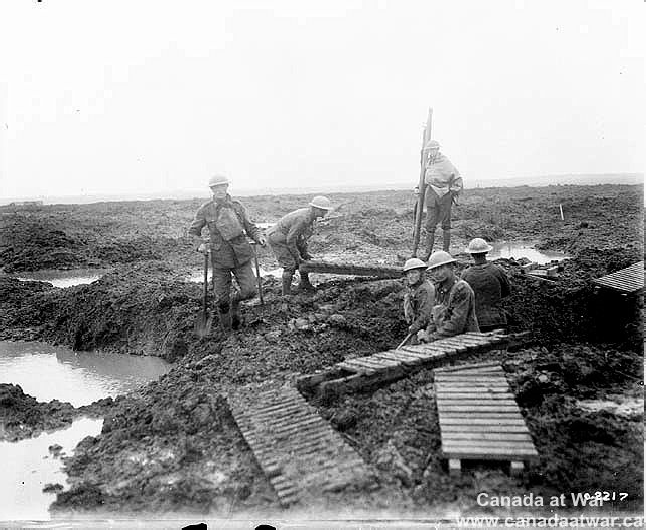
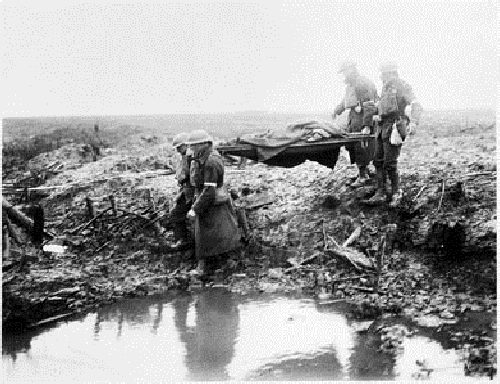
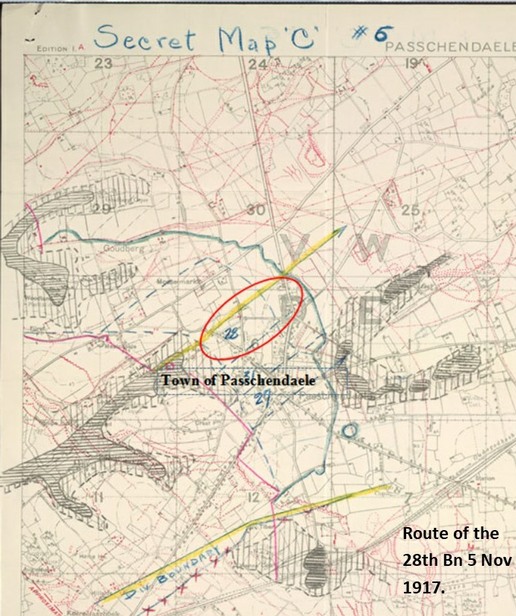
NOTES FROM THE OFFENSIVE ON 5 Nov 1917.
(6 am barrage begins)
28th Bn WD: ‘2nd Div will attack the village of Passchendaele (28th Bn on the left of a 3 Bn front to form a defensive flank). A line drawn through D6 as the first objective. The final objective will be carried by D (on right) an C Coys by passing through the leading Coys and pressing forward to the final objective.’
‘Every man will be provided with rifle oil and flannelette.’
‘Men will be equipped with packs slung on blanket straps and iron rations, extra water bottle, one grenade, one ground flare, one very light. The following supplies will be distributed: 20 S.O.S. grenades per Company, 100 rounds for each man other than bombers and rifle grenadiers. The bombers will carry six No 23 Mills Grenades, and the rifle grenadiers eight rifle grenades, including one smoke grenade. 200 shovels and 20 picks will be carried.’ The attack was to be proceeded by a creeping artillery barrage.
‘Bath matting on the forward tracks must no in any account be removed’
28th Bn WD Order 214A ‘Rum and solidified alcohol will be drawn in accordance with instructions which will be issued later’ ‘ Whale oil is available and Quartermasters will ensure that an adequate supply is maintained…. All men must use whale oil prior to moving in.’
‘The Paymaster will report to...Divisional Headquarters by 12 noon… He will be employed at Corps Main Dressing station to record the casualties as they pass through. He will have in his possession verified nominal roll of this Unit.’ This was to establish the number of casualties.
‘Men will thoroughly rub their bodies from the waist downwards with whale oil before proceeding in.’
‘Our troops immediately climbed out of their trenches and shell holes, where they had been all night and advanced behind the line of smoke rolling forward. From the jumping off point for a hundred and fifty yards forward the ground was wet and boggy and our men had to advance up a slope wading sometimes knee and even waist high in mud and water.’
‘The enemy barrage about 3 minutes after our own was heavy but erratic.’
‘...as Officer after Officer fell the chain of responsibilities was passed on…’
‘Upon investigating it was found that casualties in the assault did not exceed 35% of the force…’
Bath Matting. These were also known as duckboards and were wooden tracks laid in the bottom trenches to make movement easier. They were made from two long planks across which shorter pieces were nailed. These were laid end to end in the trench bottoms or over land routes.
Trench Diseases: It has to be noted that without antibiotics, simple diseases could easily become severe. Add to this unsanitary conditions, rats, decomposition, body lice and crowded conditions, transmission of disease was easily done.
Trench Fever: Also known as PUO or Pyrexia of Unknown Origin, this was a moderately severe disease caused by body lice. Symptoms include headache and fever that may recur several times, sore muscles, bones, and joints; and outbreaks of skin lesions on the chest and back. It occurred in 5 or 6 day cycles and could need hospital treatment for several months. Little was known about its connection with body lice until late in the war.
Trench foot: see ‘Start of Vimy’
Trench mouth: Caused by bacteria in the mouth as a result of poor dental hygiene and smoking, it resulted in bleeding and ulcerated gums. Treatment was for the symptoms only.
Trench nephritis: symptoms included breathlessness, swelling of face or legs, headache, sore throat and kidney/urinary infections. Treatment was for symptoms only. There was no treatment for the disease itself.
Bathing parades were therefore important and held as frequently as practicable– usually fortnightly.
It was still the soldier’s responsibility to keep himself clean and well shaven, even in the trenches. Bathing was done in water available, streams, rivers or as a sponge bath out of a helmet if they were in the front lines. Where formal bathing parades were possible, local bath houses (AND OTHERS???) may have been utilised. Or a mobile bath tent was erected. Men left their clothes as they entered and collected them again as they emerged. If they were very lucky the clothes had been fumigated in the interim. Men bathed in portable canvas baths and no doubt the water was used several times.
Women at Passchendaele
https://www.bbc.co.uk/news/uk-